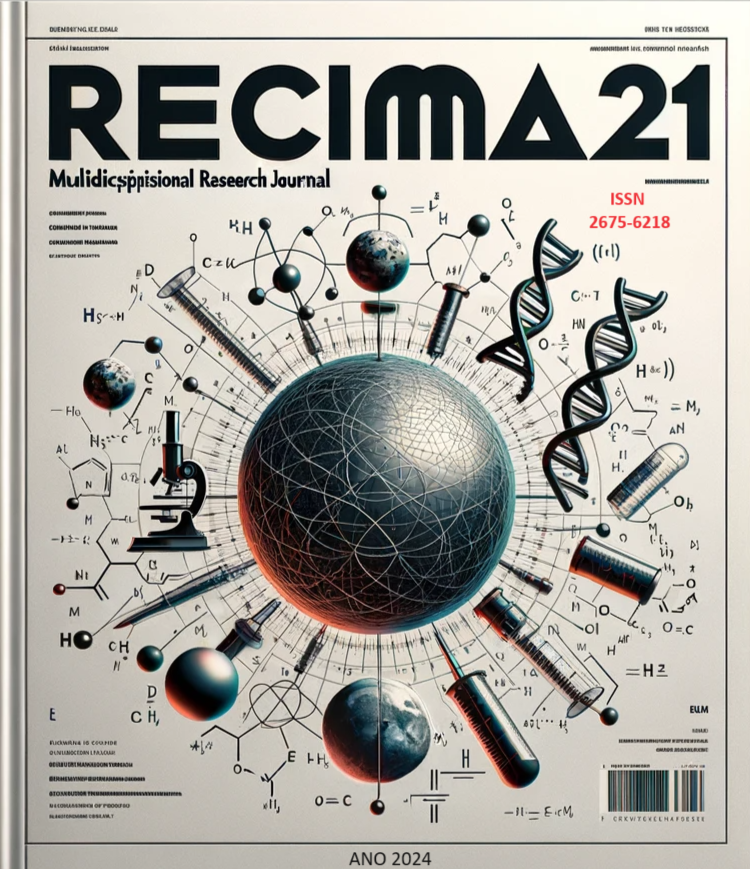SOCIAL COGNITION, COLLECTIVE IMAGINATION, ARTS AND ZEITGEIST
DOI:
https://doi.org/10.47820/recima21.v5i2.4840Palavras-chave:
Cognition, Imagination, Arts, Zeitgeist, Language, Metaphor.Resumo
Cognition and imagination are human faculties that are often thought as individual processes. In recent decades, however, they have been studied as one collective experience. Cognition and imagination are so strongly linked to both mind and body that they characterize what it means to be human. Body, brain, cognition and imagination are, in turn, related to culture; culture is manifested by the Arts. We propose that community art reflects its own zeitgeist and changes when collective cognition changes. Thus, humans continuously modify their understanding of themselves and the world. Here, we describe the changing of Arts from the Middle Ages to the Renaissance, when Arts became known by their authors and each work individualized. Concomitantly, advances in Medicine lead to the developing of a detailed human Anatomy as Perspective became increasingly visual. Shifting trends from the Renaissance to the Baroque also accompanied the manifestation of body movement in Arts as Physiology emerged in Medicine, altogether with collective cognition and imagination changing.
Downloads
Referências
BAAKE, K. Metaphor and Knowledge, The Challenges of Writing Science. Albany, NY: State University of New York Press, 2003. DOI: https://doi.org/10.1353/book4677
BRAMLY, S. Leonardo da Vinci, 1452-1519. Rio de Janeiro, RJ: Imago Editora, 1989.
DEMARIN, V.; BEDEKOVIĆ, M. R.; PURETIĆ, M. B.; PAŠIĆ, M. B. Arts, Brain, and Cognition. Psychiatr Danub., v. 28, n. 4, p. 343-348, dec. 2016.
DURAND, G. The Anthropological Structures of the Imaginary. Sao Paulo, SP: Editora Martins Fontes, 2012.
ECO, U. Art and Beauty in the Middle Ages. Rio de Janeiro, RJ: Editora Record, 1987.
FINGER, S. Origins of Neuroscience: A History of Explorations into Brain Function. New York, NY: Oxford University Press, 1994. DOI: https://doi.org/10.1093/oso/9780195065039.001.0001
HALLYN, F. The Poetic Structure of the World, Copernicus and Kepler. New York: Zone Books, 1990.
HAWLINA, H.; PEDERSEN, O. C.; ZITTOUN, T. Imagination, and social movements. Curr Opin Psychol., v. 35, p. 31-35, oct. 2020. doi: 10.1016/j.copsyc.2020.02.009. DOI: https://doi.org/10.1016/j.copsyc.2020.02.009
HOOKE, R. Micrographia: or some physiological descriptions of minute bodies made by magnifying glasses. London, UK: The Royal Society, 1665. DOI: https://doi.org/10.5962/bhl.title.105738
HUERTAS, R. The Century of Clinics. Zaragoza, Spain: Novalia Electronic Editions, 2004.
KESNER. L. A hole in piece of carboard and predictive brain: the incomprehension of modern art in the light of the predictive coding paradigm. Phil. Trans. R. Soc. B, v. 379, p. 20220417, 2023. https://doi.org/10.1098/rstb.2022.0417 DOI: https://doi.org/10.1098/rstb.2022.0417
KUHN, T. S. The Copernican Revolution, Planetary Astronomy in the Development of Western Thought. Cambridge, MA: Harvard University Press, 1957.
MELI, D. B. Mechanism, Experiment, Disease: Marcello Malpighi and Seventeenth Century Anatomy. Baltimore, MD: The Johns Hopkins University Press, 2011. DOI: https://doi.org/10.1353/book.1842
MOMENNEJAD, I. Collective minds: social network topology shapes collective cognition. Philos Trans R Soc Lond B Biol Sci., v. 377, n. 1843, p. 20200315, 31 jan. 2022. doi: 10.1098/rstb.2020.0315. DOI: https://doi.org/10.1098/rstb.2020.0315
MONGELLI, L. M. et al. Trivium and Quadrivium, The Liberal Arts in Middle Ages. Cotia, SP: Editora Ibis, 1999.
OERGEL, M. Zeitgeist. How Ideas Travel. Berlin: De Gruyter, 2019. DOI: https://doi.org/10.1515/9783110631531
PANOFSKY, E. Meaning in the Visual Arts. Sao Paulo, SP: Editora Perspectiva, 1955.
PANOFSKY, E. Perspective as Symbolic Form. New York, NY: Zone Books, 1977.
ROSSI, P. Science and Philosophy of Modern. Sao Paulo, SP: Editora Unesp, 1989.
RÜEGG, W. “Themes,” in A History of the University in Europe, Ed. Hilde De Ridder-Simoens. Cambridge, UK: Cambridge University Press, 1992. p. 3-34.
SCHWARTZ-SALANT, N. The Mystery of Human Relationship – Alchemy and the Transformation of the Self. London: Routledge, 1998.
SENNET, R. Flesh and Stone: The Body and the City in Western Civilization. New York: W.W. Norton & Company, 1997.
TUBBS, R. S. Anatomy is to physiology as geography is to history; it describes the theatre of events. Clinical Anatomy, v. 28, n. 2, p. 151, 2015. doi:10.1002/ca.22526. DOI: https://doi.org/10.1002/ca.22526
VASARI, G. Vidas dos Artistas. São Paulo, SP: Editora Martins Fontes, 2020.
WÖLFFLIN, H. Principles of Art History: The Problem of the Development of Style un Later Art. Mineola, NY: Dover Publications, Inc, 1929.
ZITTOUN, T.; CERCHIA, F. Imagination as expansion of experience. Integr Psychol Behav Sci., v. 47, n. 3, p. 305-24, sep. 2013. doi: 10.1007/s12124-013-9234-2. PMID: 23625542. DOI: https://doi.org/10.1007/s12124-013-9234-2
Downloads
Publicado
Licença
Copyright (c) 2024 RECIMA21 - Revista Científica Multidisciplinar - ISSN 2675-6218

Este trabalho está licenciado sob uma licença Creative Commons Attribution 4.0 International License.
Os direitos autorais dos artigos/resenhas/TCCs publicados pertecem à revista RECIMA21, e seguem o padrão Creative Commons (CC BY 4.0), permitindo a cópia ou reprodução, desde que cite a fonte e respeite os direitos dos autores e contenham menção aos mesmos nos créditos. Toda e qualquer obra publicada na revista, seu conteúdo é de responsabilidade dos autores, cabendo a RECIMA21 apenas ser o veículo de divulgação, seguindo os padrões nacionais e internacionais de publicação.













